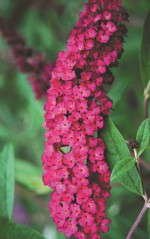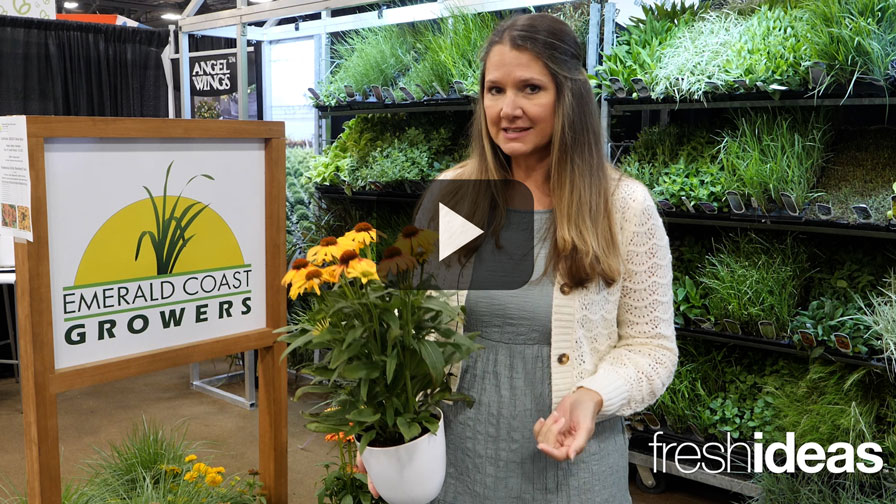Reinventing Old Genera

It’s a question asked every time plant development companies introduce a new variety of a plant that’s already well-established in our industry: Do we really need another ______?
Yet the idea of demanding that companies like Apple or Sony justify the release of new versions of their products is laughable. In other industries, constant innovation is expected; new products are not just encouraged but breathlessly awaited. It’s a given that popular products will regularly be improved upon to keep up with technological and economic realities. In the nursery industry, however, improved varieties of familiar plants are often met with skepticism and reluctance, if not outright disdain.
Help The Grower And The Gardener
The best of today’s breeding aims to meet the needs of the grower, the garden center and the end consumer, combining ease of production and excellent container presentation with enough interesting features and aesthetic qualities to appeal to even the most casual home gardener. More importantly, it does so by continually improving on plants that are already well-known, widely grown and much loved.
This continual improvement essentially eliminates the learning curve that would come with learning to grow entirely new crops. The changes being made to some of the best-loved, best-selling plants offer substantial benefit, as well as a way to address the constantly evolving challenges of today’s marketplace and garden culture.
Visual appeal, of course, will always be a primary breeding goal, and it is in this area that the most obvious improvements are being made. Now more than ever, color sells. It is the driving factor behind home gardeners’ purchasing decisions, and an unexpected or particularly outstanding color can persuade shoppers to rethink their original intentions. As plants are grouped by genus and color in the garden center setting, those with exceptional color demonstrate clear superiority to the alternatives around them.
Breeding advancements have improved the color of familiar flowers, making them richer and more pure, as with Petunia ‘Vista Bubblegum’ from Proven Winners. Breeding efforts have also created plants that retain color through hot spells (such as new lobelias), new foliage colors (such as new sweet potato vines) and entirely novel combinations of colors such as new calibrachoas and petunias. The color of older varieties literally pales by comparison to newer ones, and the end consumer is definitely noticing.
Breeders Battle Problematic Plants
The benefits of opting for new varieties transcend the merely aesthetic, though. The concept of sustainability seemed like little more than a buzzword a few years ago. Now it is driving many of the developments in new plants in some unexpected ways, like addressing issues of invasiveness. Consider the butterfly bush (Buddleia spp.) as an example. It is a beloved garden plant in much of North America, however, many produced prolific seed and it spread to natural areas, outcompeting native plants.
The problem became so severe in Oregon that transport and sale of buddleia was banned in the state in 2010. This disappointed gardeners as its colorful, long-lasting flowers and magnetic effect on butterflies and other pollinators made it a favorite. It also took revenue potential away from growers, because its popularity and fast growth rate had translated into big sales.
Fortunately, breeders had seen the problem coming and were ready with several garden-worthy sterile forms that were soon approved for sale despite the ban on other types. Now, “summer lilac” or “nectar bush” (as seedless forms of buddleia must be sold in Oregon to avoid confusion) is a successful crop for growers and a money-maker for garden centers.
New Varieties Are Eco-Friendly
Pesticide usage is another environmental issue being addressed with new varieties of popular plants. It is worth noting that genetic engineering is completely out of the scope of the ornamental breeding discussed here. Genetically modified crops have the actual DNA of a different organism forcibly inserted into an individual seed; the breeding techniques discussed here encompass more traditional methods and do not involve humans modifying the plants at a deep cellular level.
Rather, instead of enabling a grower to blanket-apply pesticides without killing the crop, as genetically modified crops sometimes do, ornamental plant breeders have created new varieties that have lower and increased branching or shorter internodes, which mean less use of growth regulators and other pesticides.
This can mean less money spent on PGRs, pesticides and paying overtime for application. In addition, decreased pesticide use reduces the risk of run-off and contamination that comes with every application and equipment rinsing, allowing growers to produce a truly sustainable crop.
Easy Plants Extend Beauty Throughout The Season
No-maintenance plants will probably never exist, but new developments in breeding are quickly making low-maintenance the standard. Breeders have developed compact forms of formerly lanky plants, stronger stems on notoriously floppy plants and self-cleaning plants that senesce their own flowers naturally.
The same maintenance chores that are eliminated for the home gardener — pruning, staking and dead-heading — are more or less eliminated for the grower as well, at least for as long as the plant is under his or her care. When customers know that one of their many choices will continue to flower all season without dead-heading or won’t require pruning, it signifies added value and implies a greater chance at success.
As much as the selection of available plant varieties may change, one thing won’t: time and money will always be precious. To maximize the capabilities of staff and facilities — as well as to make a profit — quicker-growing, lower-maintenance crops are the answer. Many new varieties require less pinching and trimming. Most importantly, these varieties have the vigor to shorten turn times, increasing profitability.
Today’s economic realities have changed the way consumers shop — they also want maximum return for minimum investment in time and money. They’re not willing to pay for an old lobelia that just stops flowering when summer heats up or for a petunia that needs constant deadheading and pinching. Because so many of the new varieties have marketing behind them, either in the form of traditional or web advertising or increased signage and more informative tags at the garden center, the value of paying a bit more for an improved variety is obvious.
Innovation Adds Value To The Marketplace
New plants don’t just happen — they’re the result of concerted breeding efforts and years of work. While tissue culture makes distributing them quicker and more cost-effective, it still takes staggering amounts of time, space and skill to create new varieties. Breeders won’t stake their reputation on a plant that has no viability in the contemporary marketplace.
Even if the breeders did, the companies they rely on to get their plants to the public won’t pour time and marketing money into plants that don’t bring something valuable to the links along the supply chain.
In many ways, breeders are the most forward-thinking members of the industry, working on addressing potential problems within a genus before they become detrimental. Embracing the innovative nature of these plants offers clear advantages and differentiates a business as visionary, self-aware and relevant.
So, do we really need another _______? Maybe the real question is, “Can we continue to provide the highest quality product without it?”









